
How to Use ESP32 (30 pin): Examples, Pinouts, and Specs
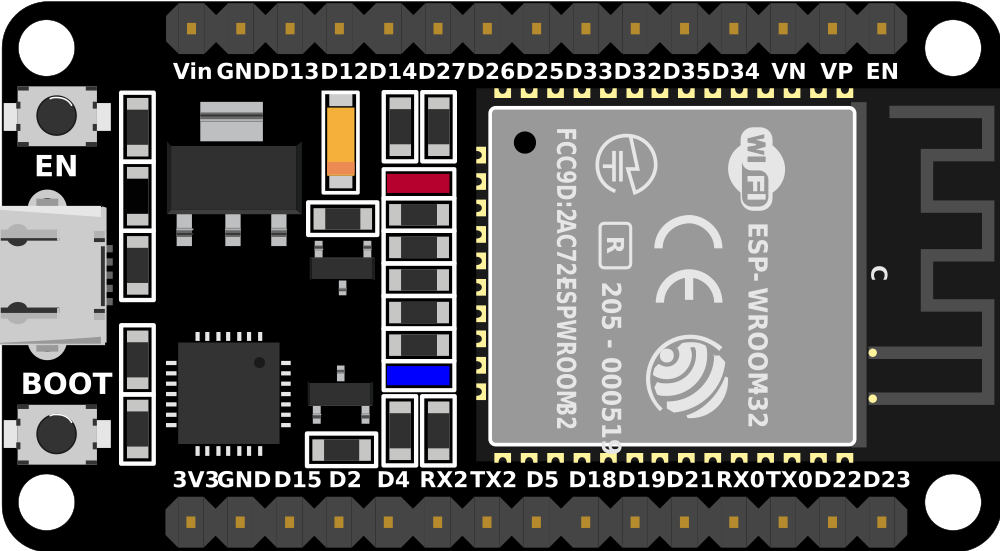
 Design with ESP32 (30 pin) in Cirkit Designer
Design with ESP32 (30 pin) in Cirkit DesignerIntroduction
The ESP32 is a powerful microcontroller with built-in Wi-Fi and Bluetooth capabilities, making it an excellent choice for Internet of Things (IoT) applications and embedded systems. With its 30-pin configuration, the ESP32 offers a wide range of input/output (I/O) options, including digital, analog, PWM, and communication interfaces such as UART, SPI, and I2C. Its dual-core processor and low-power modes make it suitable for both high-performance and energy-efficient applications.
Explore Projects Built with ESP32 (30 pin)
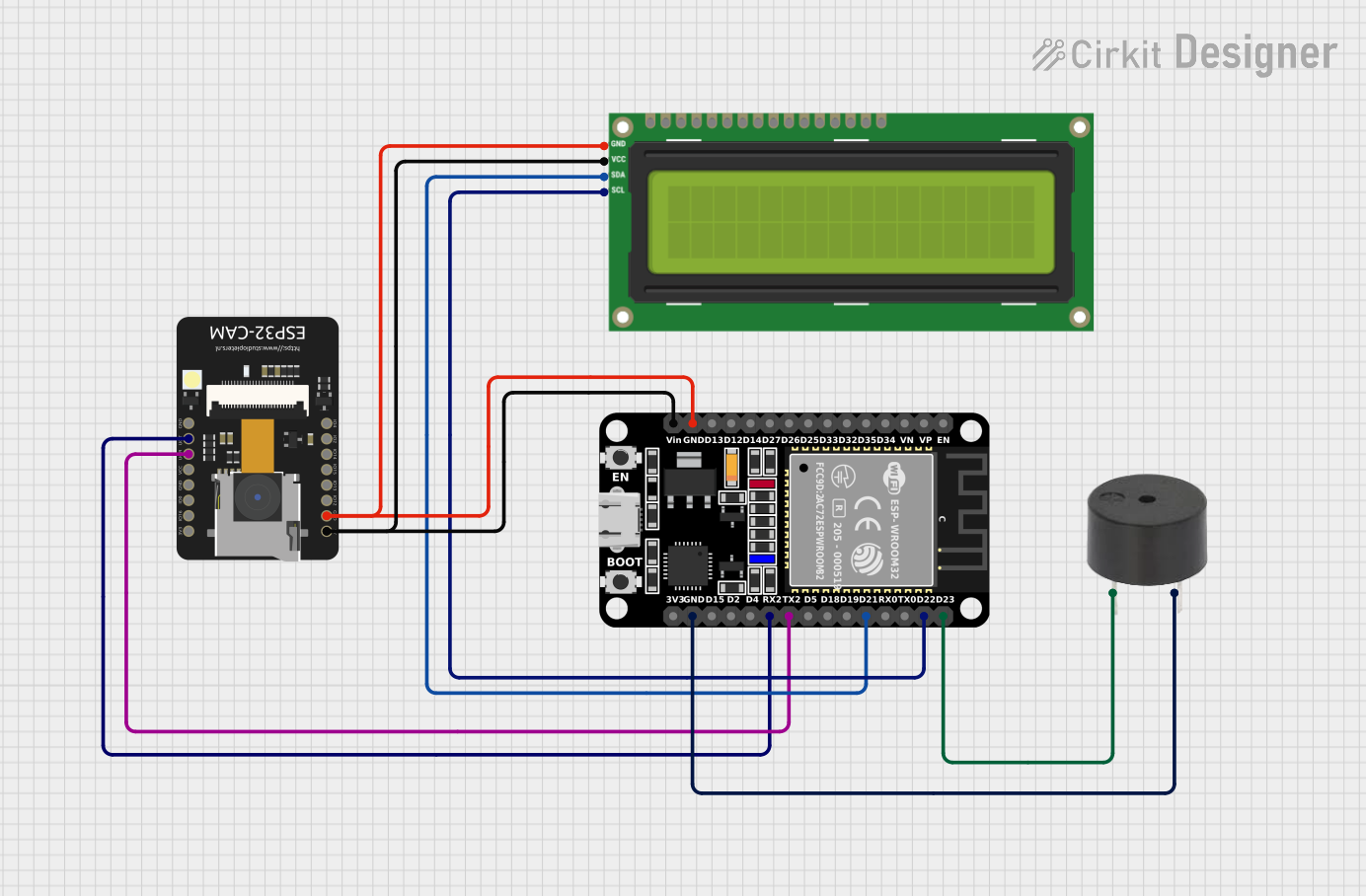
 Open Project in Cirkit Designer
Open Project in Cirkit Designer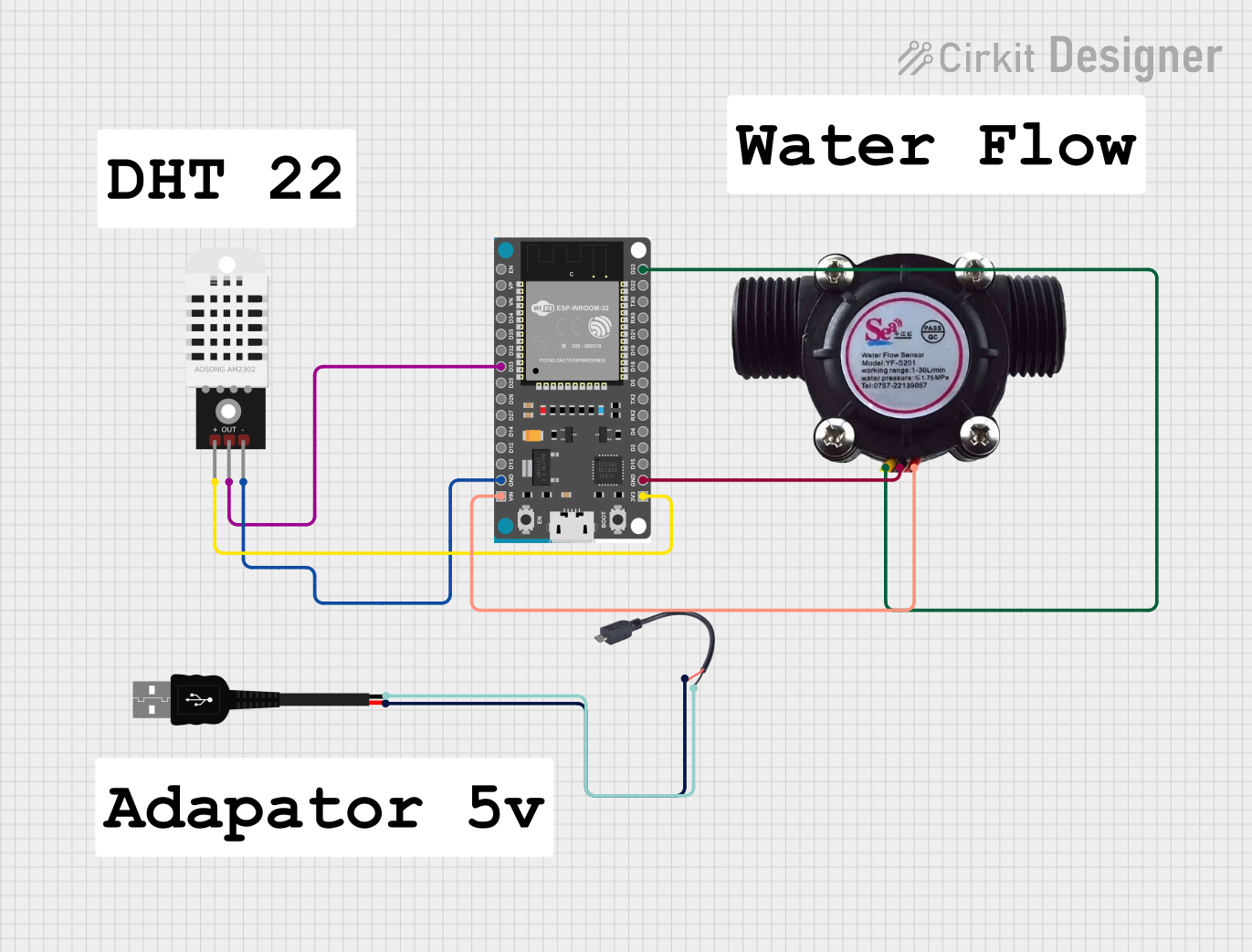
 Open Project in Cirkit Designer
Open Project in Cirkit Designer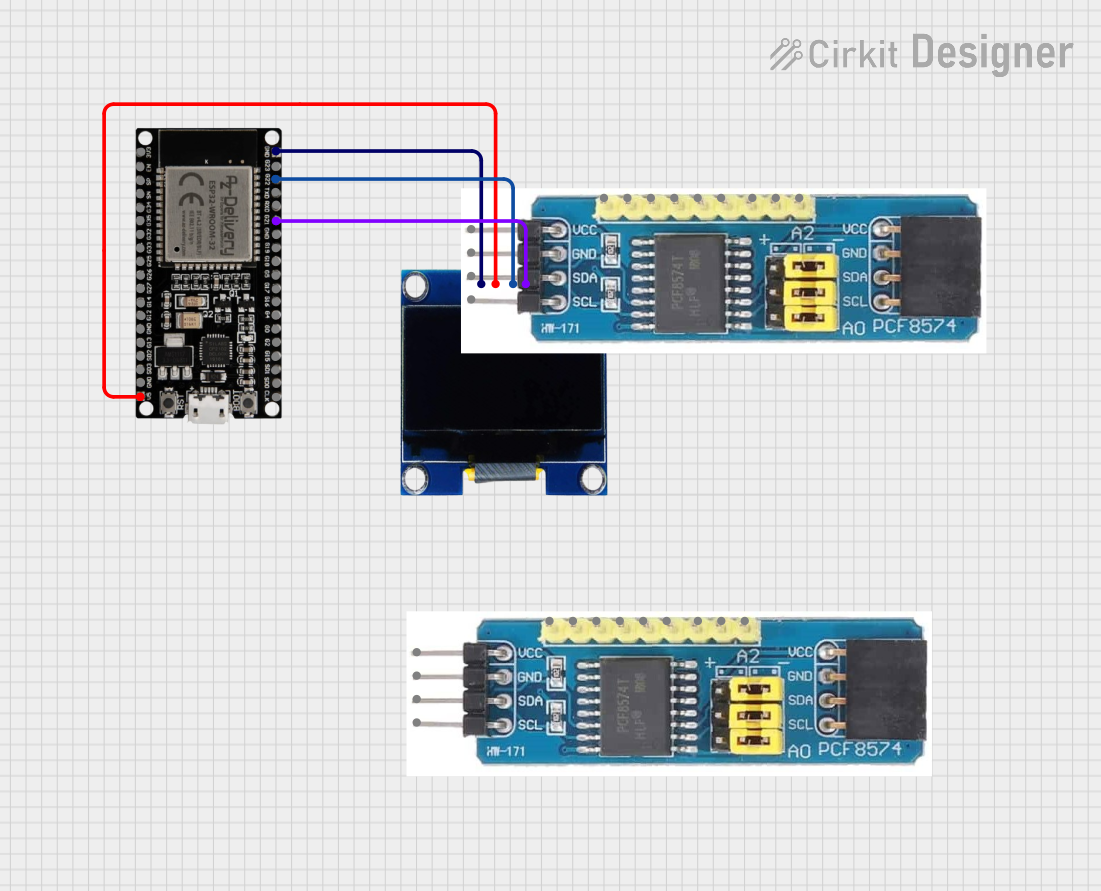
 Open Project in Cirkit Designer
Open Project in Cirkit Designer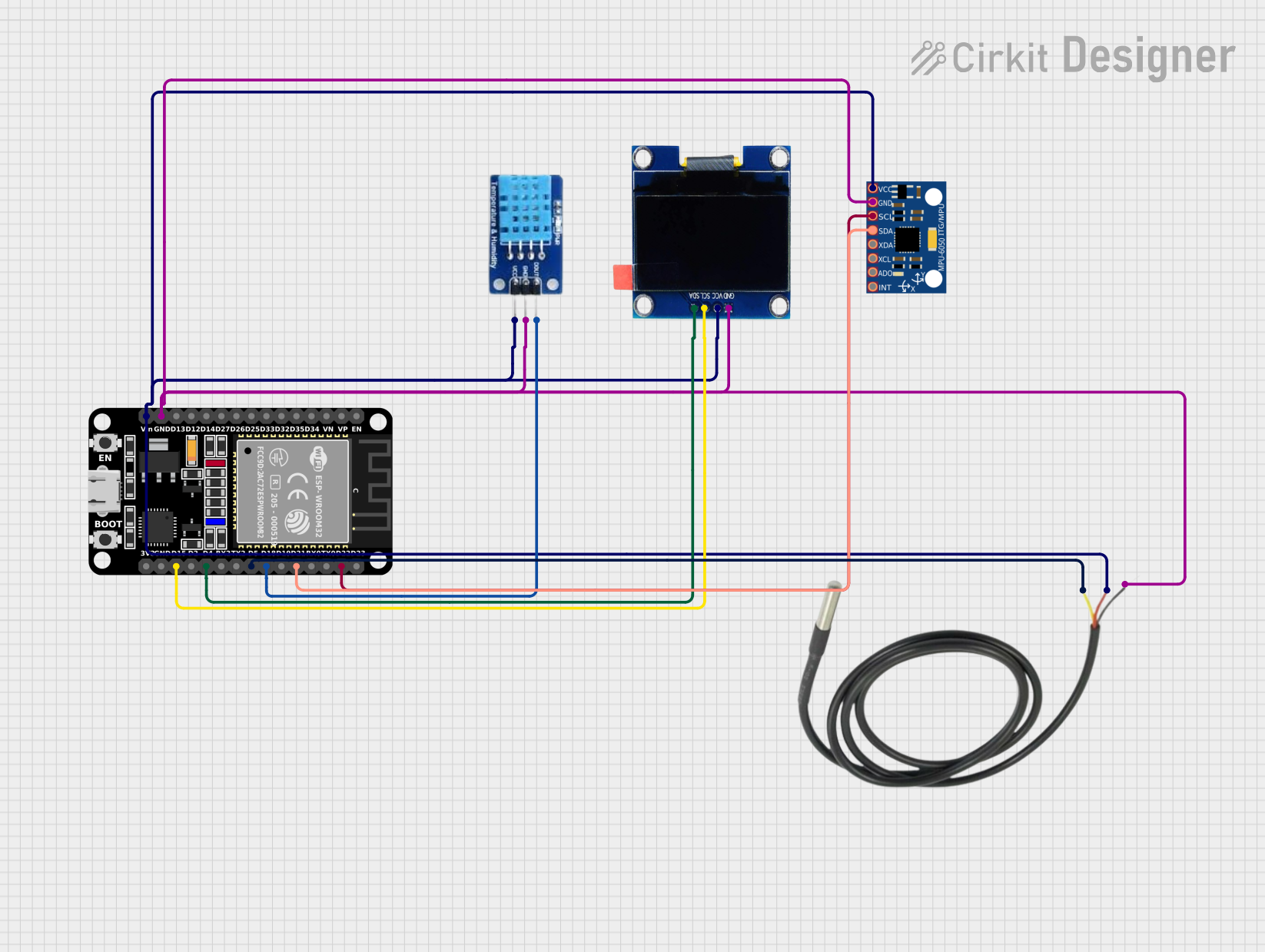
 Open Project in Cirkit Designer
Open Project in Cirkit DesignerExplore Projects Built with ESP32 (30 pin)

 Open Project in Cirkit Designer
Open Project in Cirkit Designer
 Open Project in Cirkit Designer
Open Project in Cirkit Designer
 Open Project in Cirkit Designer
Open Project in Cirkit Designer
 Open Project in Cirkit Designer
Open Project in Cirkit DesignerCommon Applications and Use Cases
- IoT devices and smart home automation
- Wireless sensor networks
- Wearable technology
- Robotics and automation systems
- Data logging and remote monitoring
- Prototyping and educational projects
Technical Specifications
The ESP32 (30 pin) microcontroller is packed with features that make it versatile and powerful. Below are its key technical specifications:
Key Technical Details
- Processor: Dual-core Xtensa® 32-bit LX6 CPU
- Clock Speed: Up to 240 MHz
- Flash Memory: 4 MB (varies by model)
- SRAM: 520 KB
- Wi-Fi: 802.11 b/g/n
- Bluetooth: v4.2 BR/EDR and BLE
- Operating Voltage: 3.3V
- Input Voltage Range: 5V (via USB) or 3.3V (via VIN pin)
- GPIO Pins: 30 pins (including digital, analog, and communication interfaces)
- ADC Resolution: 12-bit
- DAC Resolution: 8-bit
- PWM Channels: 16
- Communication Protocols: UART, SPI, I2C, CAN, I2S
- Power Consumption: Ultra-low power modes available
- Operating Temperature: -40°C to 125°C
Pin Configuration and Descriptions
The ESP32 (30 pin) has a variety of pins for different functionalities. Below is a table summarizing the pin configuration:
| Pin Name | Function | Description |
|---|---|---|
| VIN | Power Input | Input voltage (5V) for powering the ESP32 via an external source. |
| GND | Ground | Ground connection. |
| 3V3 | Power Output | Provides 3.3V output for external components. |
| EN | Enable | Enables or disables the chip. Active high. |
| IO0 | GPIO0 / Boot Mode Selection | General-purpose I/O pin. Used for boot mode selection during programming. |
| IO1-IO39 | GPIO Pins | General-purpose I/O pins. Some support ADC, PWM, I2C, SPI, or UART functions. |
| ADC1/ADC2 | Analog Input | 12-bit ADC channels for analog-to-digital conversion. |
| DAC1/DAC2 | Digital-to-Analog Converter | 8-bit DAC channels for analog output. |
| TXD0/RXD0 | UART0 TX/RX | UART communication pins for serial data transmission and reception. |
| SCL/SDA | I2C Clock/Data | I2C communication pins for interfacing with sensors and peripherals. |
| MOSI/MISO | SPI Data | SPI communication pins for data transmission and reception. |
| SCK | SPI Clock | SPI clock pin for synchronous communication. |
| A0-A19 | Analog/Digital I/O | Multipurpose pins for analog or digital input/output. |
Usage Instructions
The ESP32 (30 pin) is easy to use in a variety of circuits. Below are the steps and best practices for using the ESP32 in your projects.
How to Use the ESP32 in a Circuit
Powering the ESP32:
- Connect the VIN pin to a 5V power source or use the USB port for power and programming.
- Ensure the GND pin is connected to the ground of your circuit.
Programming the ESP32:
- Use the Arduino IDE or ESP-IDF (Espressif IoT Development Framework) for programming.
- Install the ESP32 board package in the Arduino IDE via the Board Manager.
- Connect the ESP32 to your computer using a USB cable. Select the correct board and COM port in the IDE.
Connecting Peripherals:
- Use GPIO pins for digital input/output.
- Use ADC pins for reading analog sensors.
- Use I2C, SPI, or UART pins for communication with other devices.
Uploading Code:
- Write your code in the Arduino IDE or ESP-IDF.
- Press the "Upload" button in the IDE to flash the code to the ESP32.
- If required, press and hold the BOOT button during the upload process.
Important Considerations and Best Practices
- Always use a level shifter when interfacing 5V devices with the ESP32, as its GPIO pins operate at 3.3V.
- Avoid drawing excessive current from the 3V3 pin to prevent instability.
- Use decoupling capacitors near the power pins to reduce noise and improve stability.
- Ensure proper grounding to avoid communication errors or unexpected behavior.
- Use pull-up or pull-down resistors for GPIO pins that require a defined state during boot.
Example Code for Arduino IDE
Below is an example code to blink an LED connected to GPIO2 of the ESP32:
// Define the GPIO pin for the LED
#define LED_PIN 2
void setup() {
// Set the LED pin as an output
pinMode(LED_PIN, OUTPUT);
}
void loop() {
// Turn the LED on
digitalWrite(LED_PIN, HIGH);
delay(1000); // Wait for 1 second
// Turn the LED off
digitalWrite(LED_PIN, LOW);
delay(1000); // Wait for 1 second
}
Troubleshooting and FAQs
Common Issues and Solutions
ESP32 Not Detected by Computer:
- Ensure the USB cable is functional and supports data transfer.
- Install the correct USB-to-serial driver for your operating system.
Code Upload Fails:
- Check the selected board and COM port in the Arduino IDE.
- Press and hold the BOOT button during the upload process if required.
Wi-Fi Connection Issues:
- Verify the SSID and password in your code.
- Ensure the router is within range and supports 2.4 GHz Wi-Fi.
Unstable Behavior or Random Resets:
- Check the power supply for sufficient current (at least 500 mA).
- Add decoupling capacitors near the power pins.
FAQs
Q: Can the ESP32 operate on battery power?
A: Yes, the ESP32 can be powered by a battery. Use a 3.7V LiPo battery with a voltage regulator to provide 3.3V to the VIN pin.
Q: How many devices can the ESP32 connect to via Bluetooth?
A: The ESP32 supports up to 7 simultaneous Bluetooth connections in classic mode and multiple connections in BLE mode.
Q: Can I use the ESP32 with 5V sensors?
A: Yes, but you must use a level shifter to step down the voltage to 3.3V for the ESP32's GPIO pins.
Q: What is the maximum range of the ESP32's Wi-Fi?
A: The range depends on the environment but typically extends up to 100 meters in open spaces.